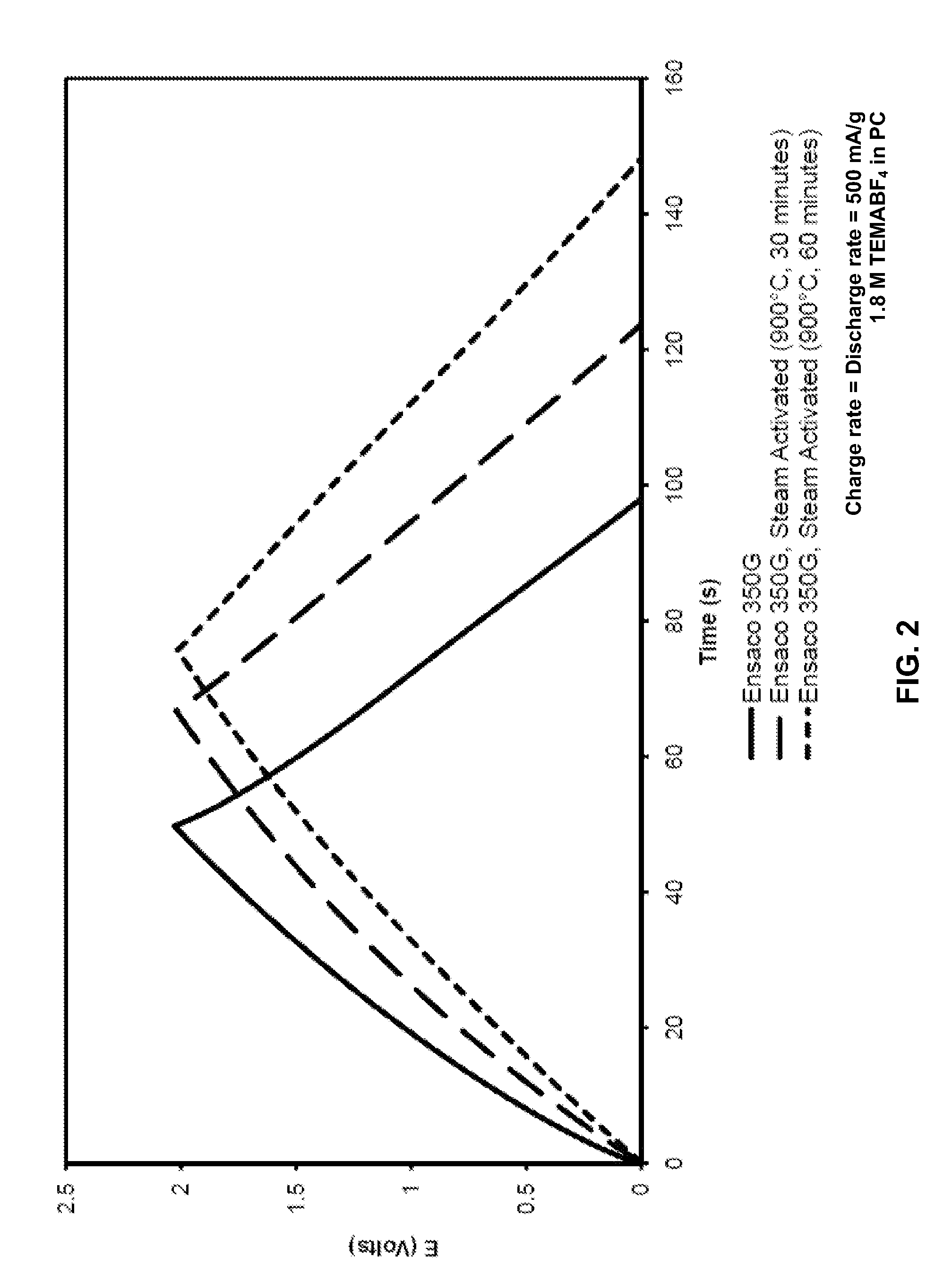Activated carbon blacks
a technology of activated carbon blacks and carbon blacks, which is applied in the direction of conductors, metal/metal-oxide/metal-hydroxide catalysts, physical/chemical process catalysts, etc., can solve the problems of marginal or unacceptable performance of current technology, too high cost, power loss, etc., to improve volumetric energy density, increase specific capacitance, and reduce the esr of edlcs
- Summary
- Abstract
- Description
- Claims
- Application Information
AI Technical Summary
Benefits of technology
Problems solved by technology
Method used
Image
Examples
Embodiment Construction
[0025]Activation of conductive carbon blacks utilizing methods of engineered nanoparticle deposition has been discovered and is described herein. The activated carbon blacks may be utilized in ELDCs to reduce ESR, improve volumetric energy density without lowering power density, and reduce the amount of surplus electrolyte used.
[0026]Previous patent applications by these inventors increased a carbon's usable surface by activation processes including surface coated catalytic nanoparticles. Specifically, general nanoparticle catalytic activation methods enhancing the rugosity and proximate exterior of carbon materials have been described in U.S. patent application Ser. No. 11 / 211,894, filed Aug. 5, 2005, and U.S. patent application Ser. No. 12 / 070,062, filed Feb. 14, 2008, the entire contents of each are incorporated herein by reference, except that in the event of any inconsistent disclosure or definition from the present application, the disclosure or definition herein shall be deem...
PUM
| Property | Measurement | Unit |
|---|---|---|
| diameter | aaaaa | aaaaa |
| diameter | aaaaa | aaaaa |
| diameter | aaaaa | aaaaa |
Abstract
Description
Claims
Application Information
 Login to View More
Login to View More - R&D
- Intellectual Property
- Life Sciences
- Materials
- Tech Scout
- Unparalleled Data Quality
- Higher Quality Content
- 60% Fewer Hallucinations
Browse by: Latest US Patents, China's latest patents, Technical Efficacy Thesaurus, Application Domain, Technology Topic, Popular Technical Reports.
© 2025 PatSnap. All rights reserved.Legal|Privacy policy|Modern Slavery Act Transparency Statement|Sitemap|About US| Contact US: help@patsnap.com



